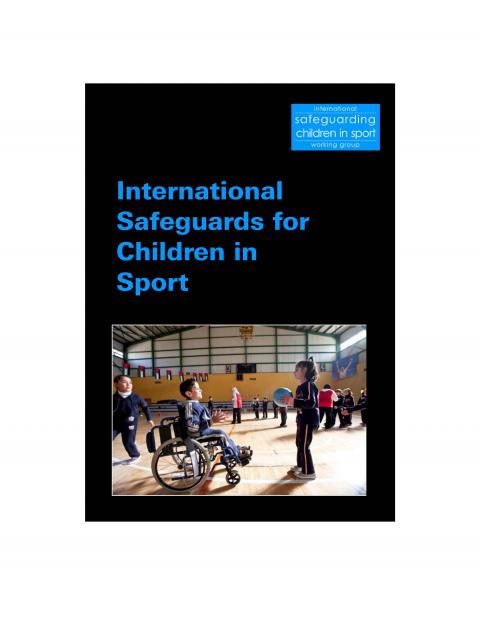You are in this section
Guest Blog: Uniting organisations to deliver quality partnership work
Liz Twyford, Sports Programmes Specialist at UNICEF UK, writes a guest blog for International Inspiration (IN) on what working together, a theme common across the international development sector, really means and how the UNICEF coordinated initiative to safeguard children in sport has supported quality partnership work. The blog follows the 'Sport for Development: A Catalyst for Change’ conference, held at Wilton Park in June this year.
One of the key themes that we kept returning to at the Sport for Development: a Catalyst for Change conference at Wilton Park, was working together.
Questions around this included:
- Are we a defined sector and in what ways can we work together more closely?
- How can the S4D movement work more effectively with the wider world of sport?
- How can S4D organisations form alliances with non-sport organisations working with the same target group, or to address the same issue?
- How can corporates and S4D organisations work together on a common cause?
And for all these movements, alliances, partnerships and working groups, how can we be effective and really make a difference for the groups we serve through our work?
For the last 3 years, I have had the great pleasure of working with more than 40 organisations globally in a unique coalition. Together we form the International Safeguarding Children in Sport Working Group – a team of committed, enthusiastic and open professionals from the worlds of sport, S4D, Government, international development and child protection, united by a simple cause – to make sport safer for children.
This work was inspired by a group of girls from South Africa. During a meeting to discuss the role of sport in supporting girls’ education, these participants talked to us instead about the dangers they faced even taking part in sport in the first place. From male players who bullied them and wouldn’t let them have access to the pitch, to issues in travelling to and from the project site, to negative community attitudes towards their involvement, the challenges were many. It quickly became clear that if these girls weren’t safe, none of the other development outcomes around empowerment and education would ever be fully achieved.
Motivated by their stories, the Working Group was formed to explore how we could support organisations to put measures in place to make their sporting activities safer for the children taking part.
With no dedicated staff and limited resources, this group have produced the International Safeguards for Children in Sport, and continue to work together to share their learning from putting the Safeguards into practice. So how have we kept the momentum going for this length of time, and what has made this particular group so effective? Well it’s hard to quantify, but here are a few of my reflections as to why this group has worked so well:
- We are united by a common, clear aim: to make sport safer – and it unites our disparate organisations, providing a common theme to all our work. It is an issue that concerns us all, whether we are using baseball with gangs in Chile, capoeira with refugees in Jordan or aiming to win the English Premier League.
- Safeguarding exists in a ‘pre-competitive’ space: it isn’t about IP, or competitive advantage – it’s about the basic things that every organisation with a responsibility for children in sport, needs to do before anything else. We don’t have branding on our materials and everybody can access and join our work – making it a genuine collaboration.
- Organisations have remained committed: Whilst the group of individuals involved are dedicated personally, where they have moved on, new, equally committed people from their organisations have stepped into their place.
- It is genuinely useful for everyone involved: Some organisations may have been on the safeguarding journey longer than others, but everyone has lessons to share, and lessons to learn, and by focussing our work on sharing those lessons, we have made sure that every time we interact, people are able to take something tangible back to their organisation – even if that is simply the understanding that someone else is struggling with the same concerns as they are.
By identifying an issue that is common for all organisations working in sport and S4D, irrespective of their target group, location or sporting discipline; by uniting these organisations with a clear, common mission; by supporting collaboration under a shared identify, rather than competition; and by creating solidarity and a platform for sharing learning beyond the individuals involved, for the benefit of their wider organisations - we are managing to work together in a coalition that is achieving real change for children in sport. What could be more effective than that!

